Tracking long-term change along the U.S.’s major coastlines
Ocean Acidification Research Cruises
Our cruises bring together ocean acidification researchers from across the region to supply coastwide the highest-quality information on ocean conditions.
Recent Federal Funding Opportunity
2025 East Coast Ocean Acidification Cruise
FY25 Ocean Acidification Coastal Research: Uniting Investigations and Shipboard Experiments
Our Coastal Ocean Acidification Research Cruises
We support ocean acidification research cruises to provide highes-quality information on ocean conditions.
NOAA’s Ocean Acidification Program supports coastal and ocean acidification research cruises along the U.S.’s major coastlines. These essential cruises supply coastwide climate-quality information on ocean conditions. More recent cruises collect and connect biology and ecology to the biogeochemistry of these marine ecosystems.
The information from these research cruises, which generally occur on a 4-year cycle for each coastline, help us track long-term ocean change and evaluate our monitoring network of buoys, gliders, and other tools. They serve as an anchor for research in the region not only by collecting these data, but by bringing together ocean acidification researchers from across the region and beyond.
What We're Measuring
Dissolved Inorganic Carbon (DIC)
Water Chemistry
The partial pressure of CO2 (pCO2) tells us how much carbon dioxide is in seawater. Sampling on ocean acidification research cruises expands an important time-series of marine carbon dioxide levels. This information helps us understand ocean carbonate chemistry and biological productivity in the region. On ECOA-3, NOAA’s Atlantic Oceanographic and Meteorological Laboratory (AOML) measured pCO2 using an underway system that continuously takes high-quality measurements during the cruise.
Partial Pressure of Co2 (PCO2)
Water Chemistry
The partial pressure of CO2 (pCO2) tells us how much carbon dioxide is in seawater. Sampling on ocean acidification research cruises expands an important time-series of marine carbon dioxide levels. This information helps us understand ocean carbonate chemistry and biological productivity in the region. On ECOA-3, NOAA’s Atlantic Oceanographic and Meteorological Laboratory (AOML) measured pCO2 using an underway system that continuously takes high-quality measurements during the cruise.Increases in carbon dioxide (known as CO2) in the atmosphere drive corresponding increases in dissolved CO2 within the surface waters of our ocean. This dissolved CO2 reacts with seawater to form carbonic acid (H2CO3). Carbonic acid breaks apart to form bicarbonate ions (HCO3-) and hydrogen ions (H+). Hydrogen ions (H+) act like free agents. And while the ocean is not acidic, these free agent hydrogen ions cause the seawater to become more acidic. We measure this using pH (H represents hydrogen ions). The free agent hydrogen ions also react with carbonate ions (CO32-) to form bicarbonate (HCO3-), making carbonate ions relatively less abundant.
Oxygen (O2)
Water Chemistry
Oxygen is a core measurement taken on coastal and ocean acidification research cruises. Like animals on land, marine life requires sufficient oxygen to live. Ocean oxygen is considered a co-stressor to ocean acidification. Both low oxygen and acidification increase stress on marine life, and they often occur at the same times and places, creating a greater burden for socio-economically important species. On ECOA-3, researchers from the University of Miami researched more about how ocean biogeochemistry controls oxygen saturation. Oxygen is measured onboard using the Winkler titration method.
Plankton & Harmful Algal Blooms
Ecosystem Health
Plankton are microscopic organisms that make up the base of the ocean food web. We measure these tiny plants (phytoplankton) and animals (zooplankton) to monitor their community dynamics and interactions with ocean change. Harmful Algal Blooms (HABs) occur when certain types of plankton grow out of control and cause severe effects to coastal resources. We monitor for HAB species in our coastal oceans to better understand their relationship with ocean acidification.
Sediment
Ecosystem Health
Sediments contribute importantly to biogeochemical cycles and remain understudied. On ECOA-3, scientists from the University of Connecticut, Avery Point collected sediments from the seafloor to better understand carbon exchange between seawater and seafloor with the help of bacteria, plankton and other marine life. This was the first time for these in depth sediment analyses on an ECOA cruise.
Take a deep dive with the sediment corer from ECOA-3 >
Nutrients
Ecosystem Health
Nitrate, nitrite, ammonium, phosphate and silicate are major inorganic nutrients that control primary production and carbon movement in the ocean. Together with the measurements of inorganic carbon, researchers will estimate the effect of riverine input, air-sea CO2 exchange, biological productivity, and carbon exchange on the coastal carbon dynamics.
Ocean Optics
VErification of Observations
Satellites complement monitoring in the water. Measurements of light in the ocean collected during daylight hours while sampling water directly enable comparisons between the different types of data. This work supports the calibration and validation of sensors on join NOAA and NASA supported satellites. Furthermore, this information helps validate satellite-based sensors for ocean carbon and better quantify the relationships between salinity and organic (life-based) and inorganic carbon. Some of the parameters collected are colored dissolved organic matter (CDOM), chlorophyll (green pigments from plankton), and salinity.
Ocean Acidification Cruise Resources
See our resource repositories for each ocean acidification research cruise including cruise photos and video.

Ocean Acidification Cruise Repositories
Cruises are organized by region, and then by year
data collected includes (or more information on our Data page)
Images credited to NOAA or others as listed.
Cruises by Region
East Coast
The East Coast Ocean Acidification Cruise (ECOA) is NOAA’s coastwide sampling of the region. The cruise provides high quality data for monitoring the carbon system along the U.S. East Coast and covers fishing grounds for the nation’s most valuable fisheries, potential siting for wind energy projects, and other important navigational and ecological areas. The climate quality information gleaned by cruises like ECOA help us track long-term ocean change and evaluate data from our monitoring network of buoys, gliders, and other tools.
ECOA-3
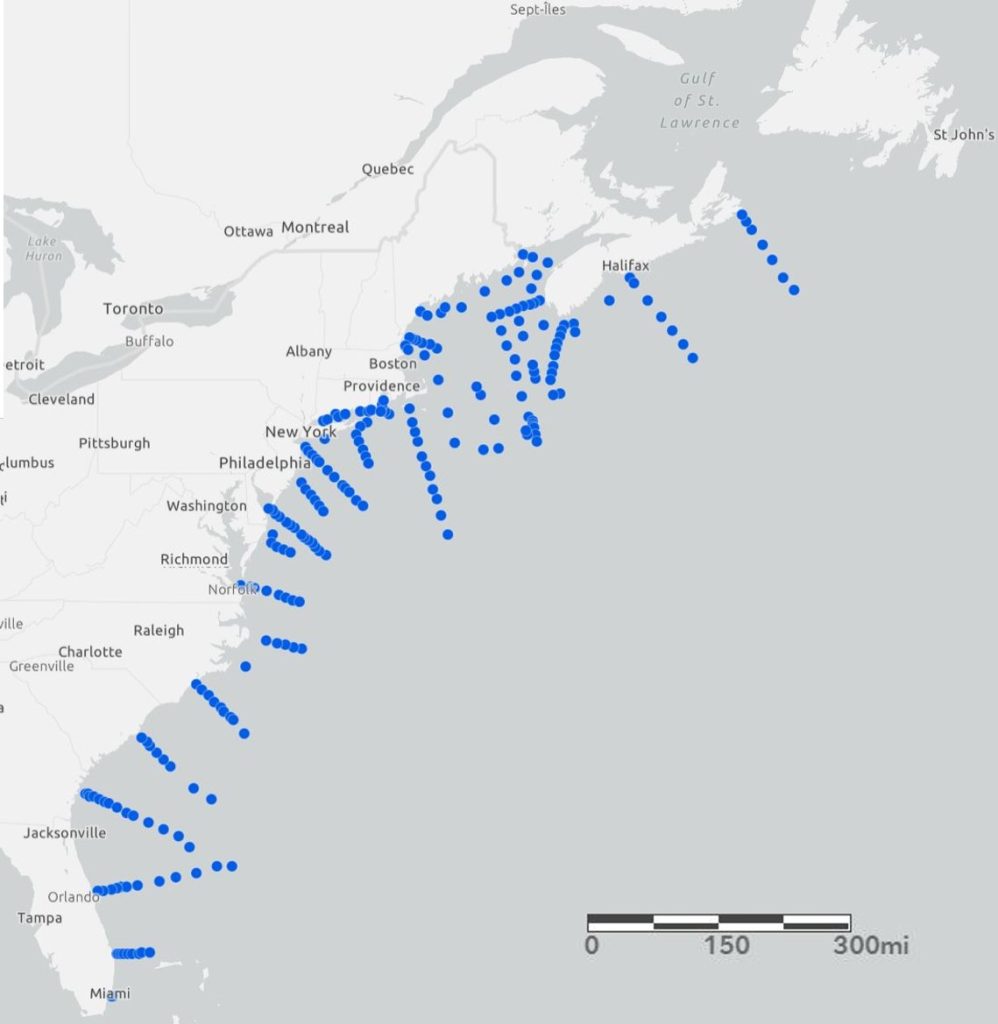
Gulf of Maine
The Gulf of Maine is strongly influenced by the Labrador Current, which carries poorly buffered, cold water into the Gulf. Large rivers bring low alkalinity, high nutrient runoff into the Gulf. Regional warming could slow down anthropogenic CO2 acidification, but current modeling projections suggest that ocean acidification will overwhelm warming by 2050. Fisheries that are both economically and culturally important for the region include lobsters and scallops as well as oyster and mussel aquaculture that occurs in estuaries.Georges Bank
Productivity in this region Georges Bank matches nearshore coastal areas, which is unique for an offshore area. The cold, nutrient-rich Labrador current washes over this shoal that is larger than the size of Massachusetts. The intersection of this current with the highly buffered Gulf Stream, tidal action promoting oxygenation and high sunlight from the shallow depth all fuel the area’s productivity. Georges Bank supports commercial fisheries including Atlantic cod, haddock, lobsters, cod, the largest scallop fishing area in the northeast, and more.Long Island Sound
Long Island Sound is an important tidal estuary and marine sound nestled between New York and Connecticut with a rich and dynamic maritime history. With the mix of freshwater and the ocean, the sound supports shellfish aquaculture and several commercial and recreational fisheries for anadromous fish (fish that return to natal rivers) and marine fish. The scientific crew will complete sampling in the Long Island Sound on the second leg of the cruise.
Mid-Atlantic Bight
The Mid-Atlantic Bight (MAB) runs along the coast from Massachusetts to North Carolina and contains several smaller bights, which are deep curved coastlines. Here, the Gulf Stream and Labrador Current intersect offshore and the mixing of these waters and regional warming impacts the coastal carbonate system in the MAB. A subsurface “Cold Pool” created by seasonal stratification is important for recruitment of young fish; the lack of ventilation to the atmosphere makes it susceptible to acidification. Several bays within the MAB that ECOA-3 will sample are Hudson Bay, Delaware Bay, and Chesapeake Bay. The ECOA cruise will collect acidification data in near-shore habitats that are currently not well-sampled, but are very valuable to Mid-Atlantic's economically important shellfish resources (hard clams, oysters, and surf clams), the emerging aquaculture industry, and other fisheries.Chesapeake Bay
As the nation's largest estuary, Chesapeake Bay supports more than 18 million people within the watershed and is one of the most economically productive regions through maritime activities. With nutrient-rich runoff and other stressors, Chesapeake Bay experiences both ocean and coastal acidification as well as harmful algal blooms (HABs). Efforts over recent decades to improve water quality of the region help support aquaculture and several recreational and commercial fisheries including blue crab, striped bass, and other finfish.South Atlantic Bight
The South Atlantic Bight (SAB) is largely influenced by the Gulf Stream. Ocean and coastal acidification have disparate affects on areas within the SAB. Ocean acidification may have a greater impact on coral reefs and soft bottom corals as well as offshore fishing, whereas coastal acidification is more impactful on estuaries and coastal marshes. ECOA focuses on the offshore and near-shore sampling that can be partnered with other research in coastal areas to help build a more complete picture. Cruises like ECOA-3 are essential to determine the coastal or offshore sources of acidified waters.The ECOA-3 Cruise
- 8/5/2022 - 9/24/2022
- NOAA Ship: Ronald H. Brown
- Chief Scientists: Joe Salisbury and Wei-Jun Cai
- Download Cruise Report
ECOA-3 is the third iteration of the East Coast Ocean Acidification Cruise and marks 15 years since the first NOAA coastwide sampling of the region. The cruise provides high quality data for monitoring the carbon system along the U.S. East Coast and will cover fishing grounds for the nation’s most valuable fisheries. This iteration not only monitors ocean chemistry, but also links marine biological and chemical processes, and improves our ability to model and forecast ocean change. The information gleaned by cruises like ECOA-3 help us track long-term ocean change and evaluate data from our monitoring network of buoys, gliders, and other tools. The cruise is led by scientists at the University of New Hampshire and joined through transdisciplinary partnerships with others from the University of Delaware, University of Connecticut, University of Miami, North Carolina State University, Lamont-Doherty Earth Observatory, NOAA and others that continue their work shoreside. Learn more about their research by hovering over the items on the map (above).
ECOA-2
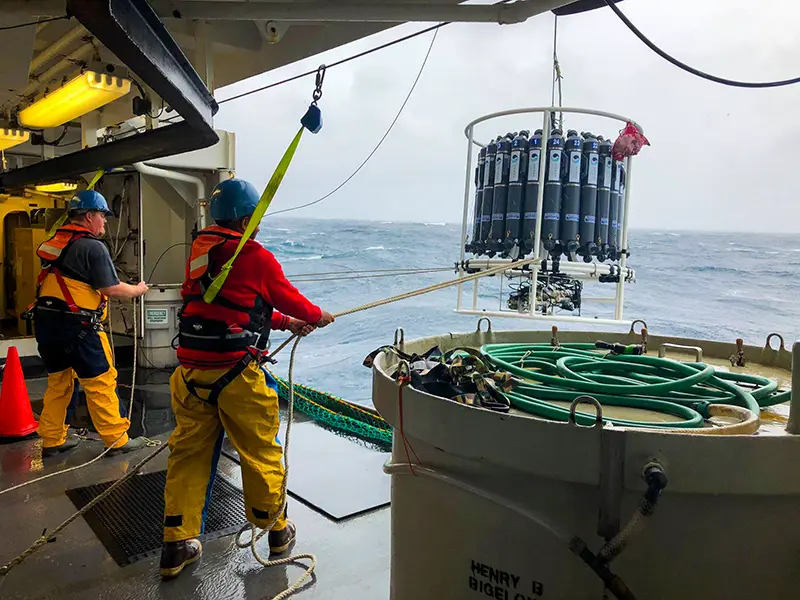
The ECOA-2 Cruise
- 6/25/2018 - 7/29/2018
- NOAA Ship: Henry B. Bigelow
- Chief Scientists: Joe Salisbury and Wei-Jun Cai
- Cruise Map
- Download Cruise Report
ECOA-1

The ECOA-1 Cruise
- 6/17/2015 - 7/24/2015
- NOAA Ship: Gordon Gunter
- Chief Scientists: Joe Salisbury and Wei-Jun Cai
- Cruise Map
- Download Cruise Report
Click the button below to access the Ocean Carbon and Acidification Data Portal and enter “ECOA” in the “Additional Terms” field.
EcoMon 2023

EcoMon Summer 2023
- 8/8/2023 - 8/25/2023
- NOAA Ship: Henry B. Bigelow
- Cruise Map
- Cruise Web Page
EcoMon is a NOAA Fisheries ecosystem monitoring cruise held quarterly in the northeast U.S. Through OAP support, carbon parameters are collected on EcoMon cruises alongside fisheries ecosystem metrics.
The EcoMon OA sampling occurs at 35 fixed stations which have remained consistent throughout the prior years of the survey. Stations are arranged in cross shelf transects from North Carolina to the Gulf of Maine, with additional stations at locations of interest dictated by oceanographic features such as the Northeast Channel in the Gulf of Maine, which serves as a conduit for source waters entering the region. At each station we sample surface, middle and bottom depths for total alkalinity (TA), dissolved inorganic carbon (DIC), and pH, alongside oceanographic profiles with conductivity (salinity), temperature depth (CTD) and dissolved oxygen sensors. The EcoMon surveys also perform oblique bongo net tows for zooplankton and ichthyoplankton with attached CTD instruments at ~130 stations. Starting in 2021, funded by NOAA OAP, the NEFSC has been subsampling pteropods from bongo nets for optical analysis of shell transparency as an indicator of biological OA exposure, using methods developed by Dr. Amy Maas at the Bermuda Institute of Ocean Science (BIOS).
West Coast Ocean Acidification Cruise
WCOA 2021
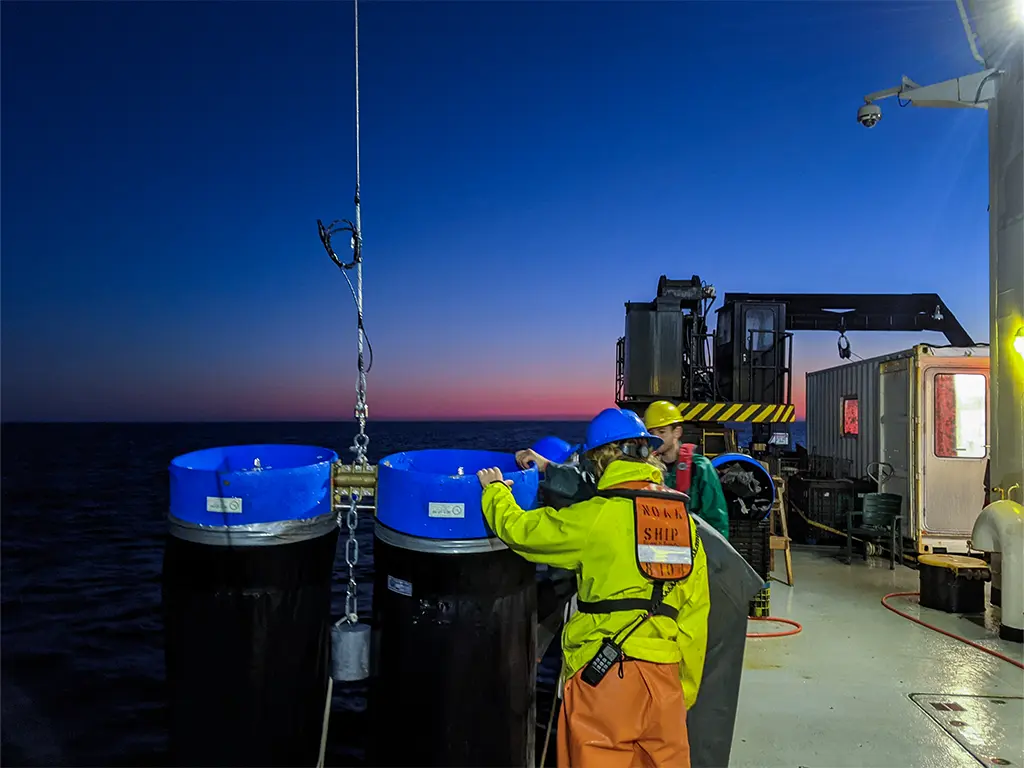
The WCOA 2021 Cruise
- 6/13/2021 - 7/26/2021
- NOAA Ship: Ronald H. Brown
- Chief Scientists (Leg 0): Dana Greeley and Julian Herndon, June 13 to June 23
- Chief Scientists (Leg 1): Richard Feely and Brendan Carter, June 23 to July 8
- Chief Scientists (Leg 2): Brendan Carter and Dana Greeley, July 8 to July 26
- View Cruise Map
- Download Cruise Report
WCOA 2016
The WCOA 2016 Cruise
- 5/5/2016 - 6/7/2016
- NOAA Ship: Ronald H. Brown
- Chief Scientists (Leg 0): Dana Greeley and Julian Herndon, June 13 to June 23
- Chief Scientists (Leg 1): Richard Feely and Brendan Carter, June 23 to July 8
- Chief Scientists (Leg 2): Brendan Carter and Dana Greeley, July 8 to July 26
- View Cruise Map
- View Cruise Blog
WCOA 2013
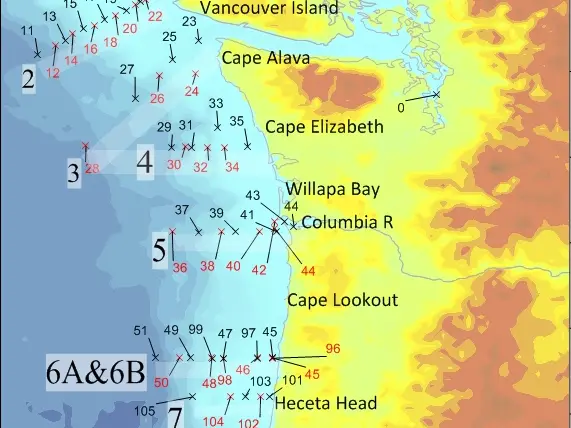
The WCOA 2013 Cruise
- 8/3/2013 - 8/29/2013
- UNOLS Vessel R/V Pt. Sur
- Chief Scientists (Leg 1): Richard Feely and Adrienne Sutton
- Chief Scientists (Leg 2): <a hreRichard Feely and Dana Greeley
- View Cruise Map
WCOA 2012
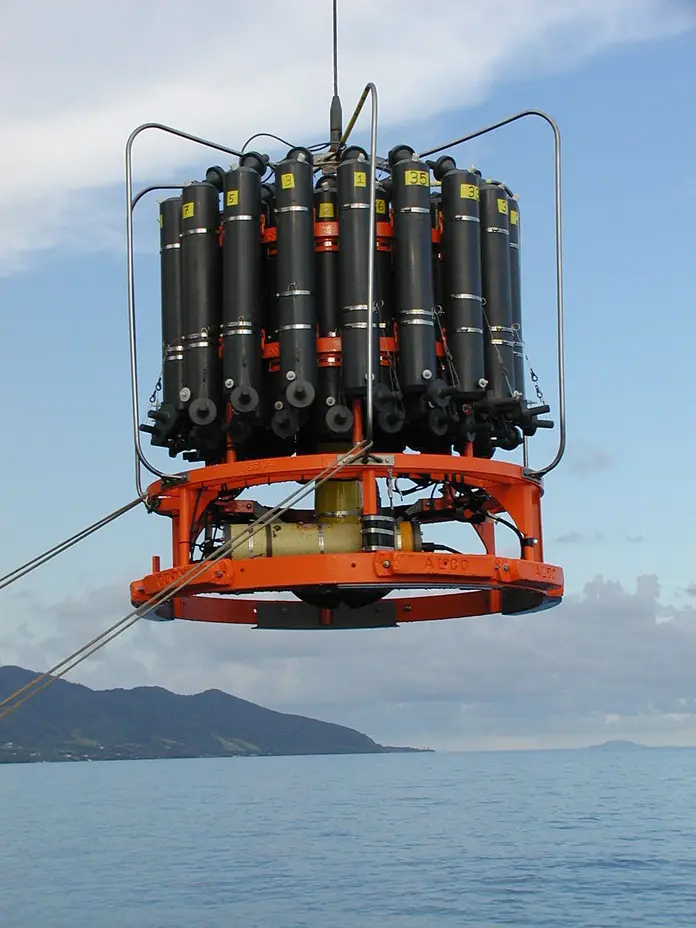
The WCOA 2012 Cruise
- 9/4/2012 - 9/17/2012
- NOAA Ship: Bell M Shimada
- Chief Scientists: Richard Feely and Lauren Juranek
- View Cruise Map
WCOA 2011

The WCOA 2011 Cruise
- 8/12/2011 - 8/30/2011
- NSF Shipt R/V Wecoma (retired)
- Chief Scientists: Richard Feely and Lauren Juranek
- View Cruise Map
WCOA 2007

The WCOA 2011 Cruise
- 5/11/2007 - 6/14/2007
- NSF Ship R/V Wecoma (retired)
- Chief Scientists: Richard Feely and Chris Sabine
- View Cruise Map
*Sponsored by North American Carbon Program
Gulf and Ocean Monitoring of Ecosystems
& Carbon Cruise
The Gulf and Ocean Monitoring of Ecosystems and Carbon Cruise (GOMECC) surveys the carbon system along the coastal waters of the Gulf of America (formerly known as the Gulf of Mexico). GOMECC aims to monitor changes in the Gulf’s carbon system, including natural and human-caused impacts to ecosystems. Following historic survey tracks, GOMECC provides long-term time series data as well as opportunities for piggyback projects like drifter deployments or sediment coring operations. The cruise leaves from and returns to South Florida after sampling the Gulf.
To view cruise data, visit the repository at the National Centers for Environmental Information.
GOMECC-4
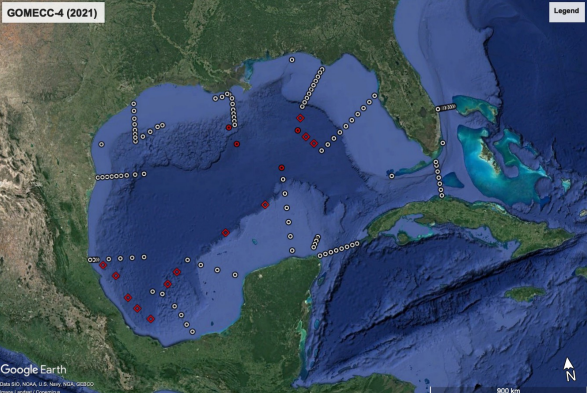
The GOMECC-4 Cruise
- 9/12/2021 - 10/21/2021
- NOAA Ship: Ronald H. Brown
- Chief Scientists: Leticia Barbero and Andrew Stefanick
- View Cruise Map
GOMECC-3
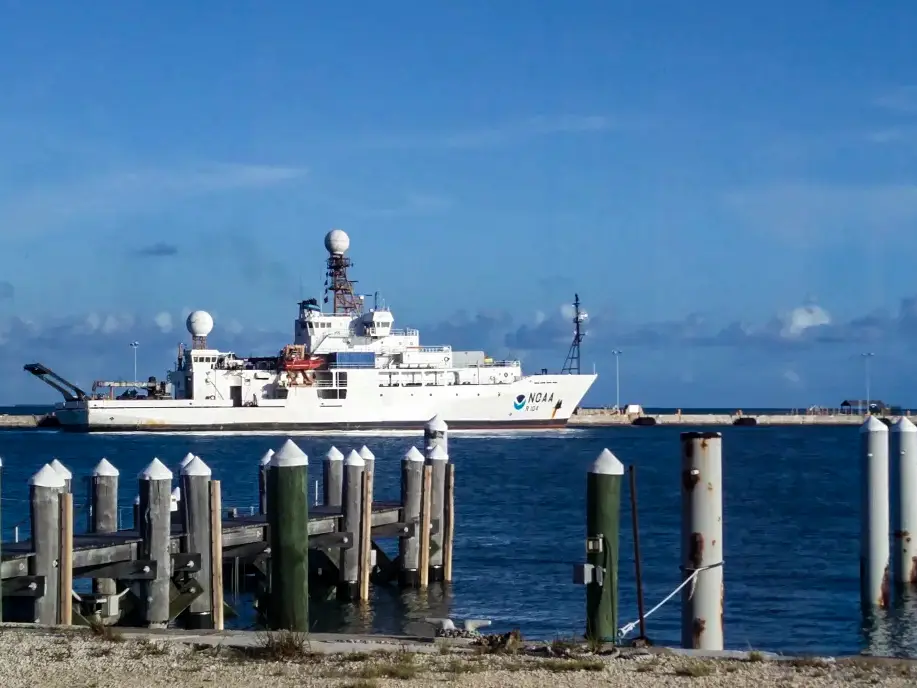
The GOMECC-3 Cruise
Press in English
- All Aboard the Carbon Cruise, News@theU, University of Miami
Press in Spanish
- Participa CICESE en crucero de la NOAA por el Golfo de México: lanzan blog para seguir incidencias, TODoS@CICESE
- Un mes en alta mar para estudiar los cambios químicos en el océano, Heraldo
- Participa CICESE en crucero de la NOAA por el Golfo de México: lanzan blog para seguir incidencias, El Vigia
- Cicese en crucero de la NOAA, Uniradio Informa
- Científicos mexicanos abordan el crucero científico de la NOAA para estudiar el Golfo de México, México Ambiental
GOMECC-2

The GOMECC-2 Cruise
- 7/21/2012 - 8/13/2012
- NOAA Ship: Ronald H. Brown
- Chief Scientists: Rik Wanninkhof, Michelle Wood, and Leticia Barbero
- View Cruise Map
- View Cruise Report
- Cruise Video
GOMECC-1

The GOMECC-1 Cruise
- 7/10/2007 - 8/4/2007
- NOAA Ship: Ronald H. Brown
- Chief Scientists: Tsung-Hung Peng and Chris Langdon
- View Cruise Map
- View Cruise Report
Caribbean
OAP provides support for research cruises in the Caribbean in partnership with the National Coral Reef Monitoring Program (NCRMP). These cruises monitor the status and trends of coral reef ecosystems in the U.S. Virgin Islands and Puerto Rico.
NCRMP St. John and St. Thomas USVI 2023
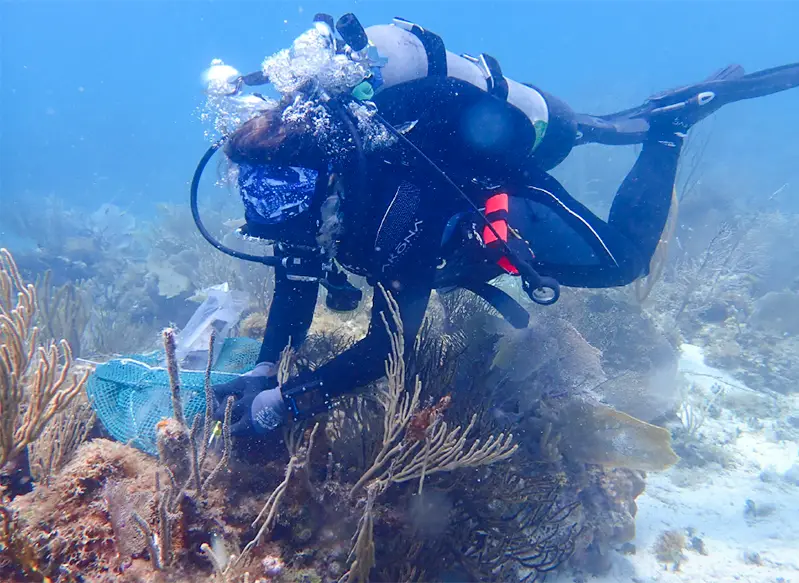
NCRMP St. John and St. Thomas USVI 2023
- 7/19/2023 - 7/29/2023
- Principal Investigator: Ian Enochs
- Cruise Report
- View Cruise Map
NCRMP Puerto Rico 2023
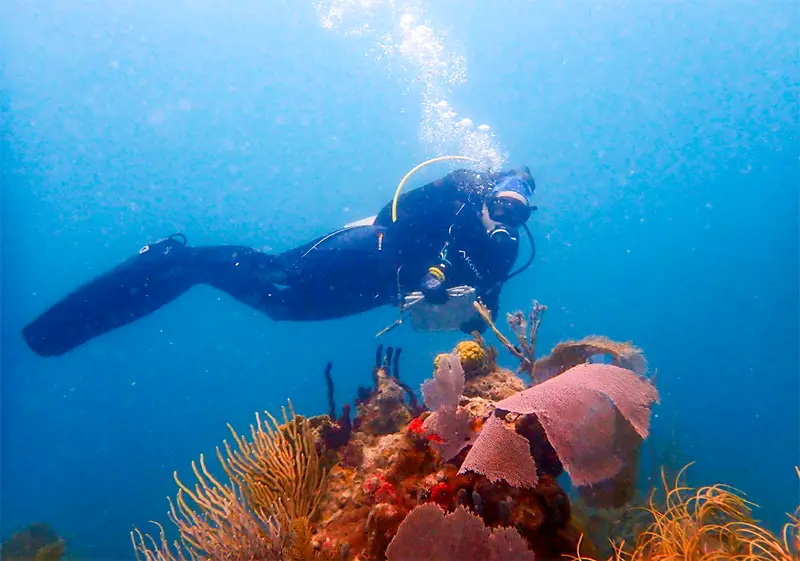
NCRMP Puerto Rico 2023
- 5/17/2023 - 5/25/2023
- Principal Investigator: Ian Enochs
- View Cruise Report
- View Cruise Map
Alaska & ARCTIC
GAKOA 2022
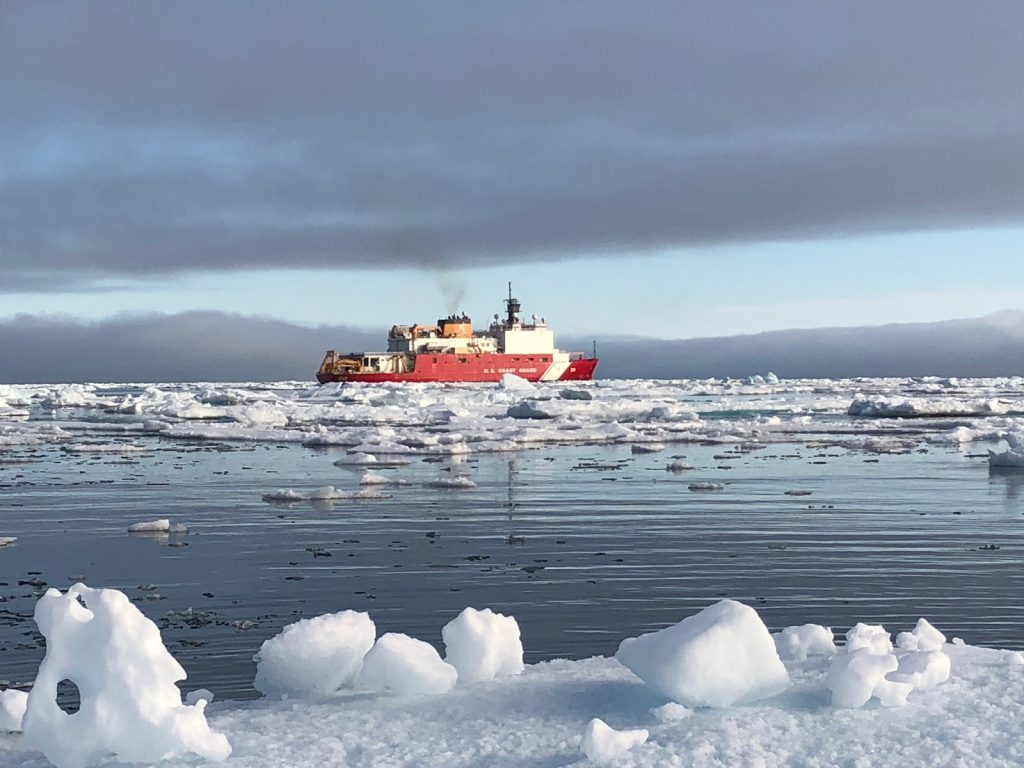
2022 Gulf of Alaska OA Cruise (GAKOA)
- 8/8/22 - 8/31/22
- R/V Rachel Carson
- Chief Scientist: Jessica Cross, PMEL
- View Cruise Blog
- View Cruise Web Page
The Alaska Ocean Acidification Cruise (AKOA) is OAP’s newest cruise, piloted in 2022. AKOA surveys the carbon system off the coast of Alaska. This cruise provides high-quality ocean carbon data in important fisheries areas, and encourages collaboration between multiple ocean observing nodes.
BASIS 2022
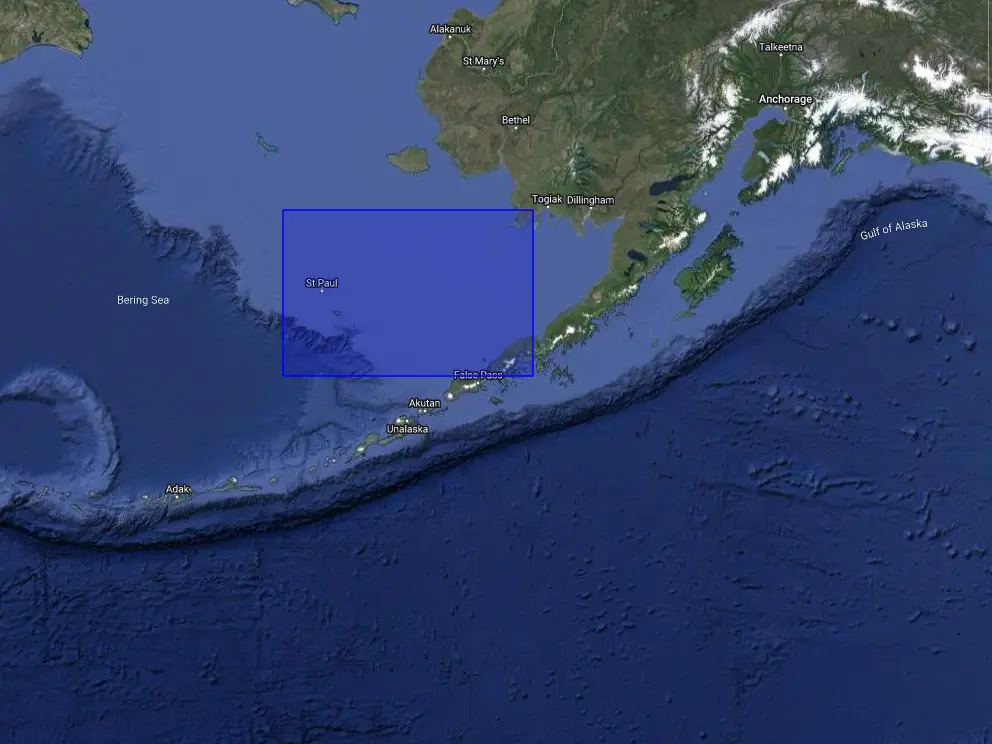
Bering Arctic Subarctic Integrated Survey (BASIS) 2022
- 8/18/22 - 9/9/22
- NOAA Ship: Oscar Dyson
- Chief Scientist: Alex Andrews
- Cruise Map
- View Cruise Web Page
OAP provided support for the NOAA Fisheries Bering Arctic Subarctic Integrated Survey (BASIS) on NOAA Ship Oscar Dyson. Through this opportunity, researchers collected carbon data in the Bering Sea during the fisheries survey cruise
Pacific Islands
OAP provides support for research cruises in the Pacific Islands, including the Rainier Integrates Charting, Hydrography, and Reef Demographics (RICHARD) missions and regular National Coral Reef Monitoring Program (NCRMP) research cruises. These cruises are dedicated to assessing and mapping coral reef habitat in the Pacific Islands. OAP’s support allows scientists to measure the carbon system in these important reef habitats, providing information on interactions between ocean acidification and Pacific Islands reef health. Check out this story summarizing ocean acidification impacts on coral reefs from decades of research in the Pacific from these types of cruises.
2025 NCRMP Marianas Mission
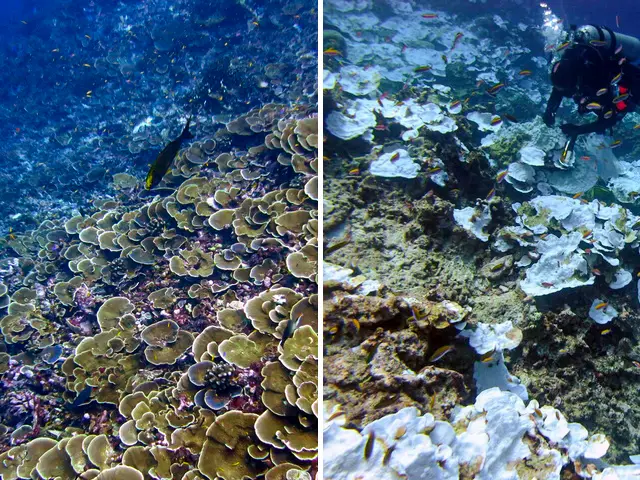
2025 National Coral Reef Monitoring Program Marianas Mission
- 3/24/2025 - 6/28/2025
- NOAA Ship Oscar Elton Sette
- Chief Scientist: Jennifer Samson
- Cruise Website
During this monitoring mission, NOAA scientists will work to provide long-term, high quality data on coral reef communities, fish populations, oceanographic conditions, and ocean chemistry to evaluate potential changes in coral reef health throughout the Northern Marianas including Guam and Saipan. Underwater, our scientists record fish and habitat data, collect images of the ocean floor, swap out instruments, and collect water samples.
Itinerary
Leg 1: March 24 – April 15
Leg 2: April 22 – May 2
Leg 3: May 8 -31
Leg 4: June 6 -28
Webinar
Press
2024 NCRMP Hawai'i Mission
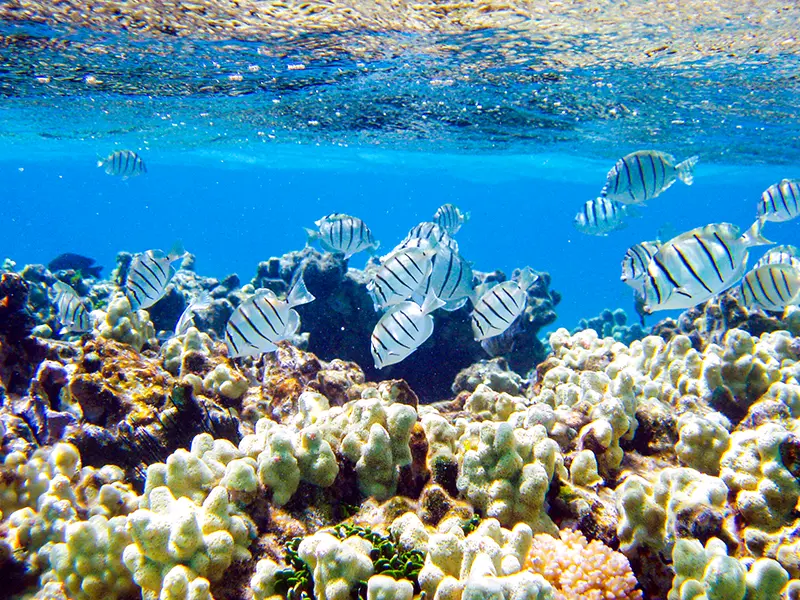
2024 National Coral Reef Monitoring Program Hawai'i Mission
- 7/2/2024 - 7/29/2024
- NOAA Ship Oscar Elton Sette
- Chief Scientist: Hannah Barkley
- Cruise Website
- Image Gallery
During this monitoring mission, NOAA scientists will work to provide long-term, high quality data on coral reef communities, fish populations, oceanographic conditions, and ocean chemistry to evaluate potential changes in coral reef health throughout the Pacific Islands region. Underwater, our scientists record fish and habitat data, collect images of the ocean floor, swap out instruments, and collect water samples.
Itinerary
Leg 1:
July 2-4, 19: Maui
July 7 – 11: Hawai‘i
July 12 -13: Kaho‘olawe
July 14 – 18: Moloka‘i
July 20 -22: Lāna‘i
July 23: O‘ahu
July 24 – 26: Kaua‘i
July 27 – 29: Ni‘ihau
Leg 2:
Aug 8 – Sept 9: Lalo, Kapou, Holaniku and Manawai
Cruise Updates
2023 RICHARD American Samoa and Pacific Remote Island Areas (PRIAs)
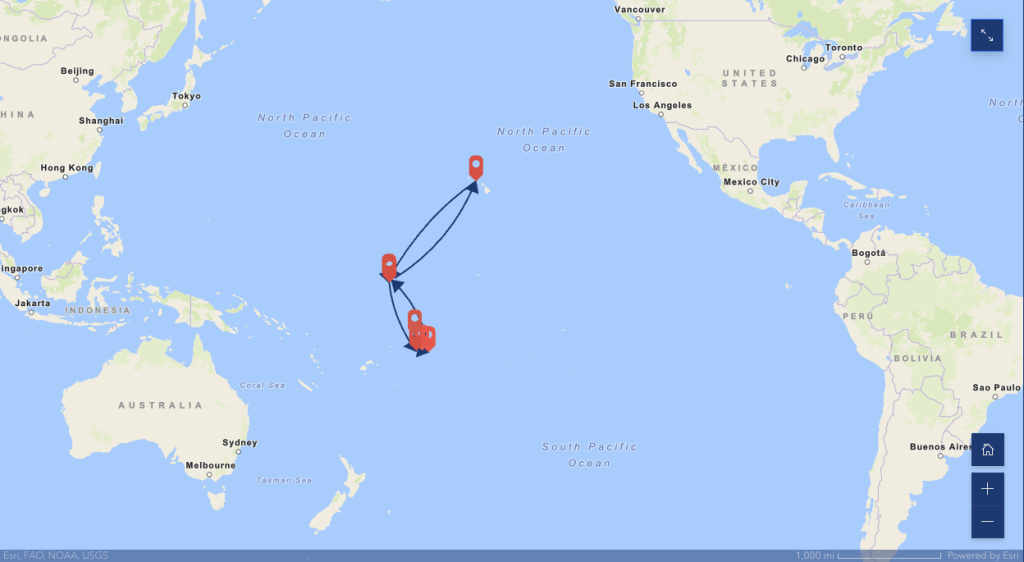
2023 RICHARD American Samoa and Pacific Remote Island Areas (PRIAs)
Media / Press
- Governor applauds completion of segment of NOAA RICHARD cruise, Talanei
- Learn more about the proposed national marine sanctuary (PDF), NOAA Office of National Marine Sactuaries
2022 RICHARD Marianas Islands Mission
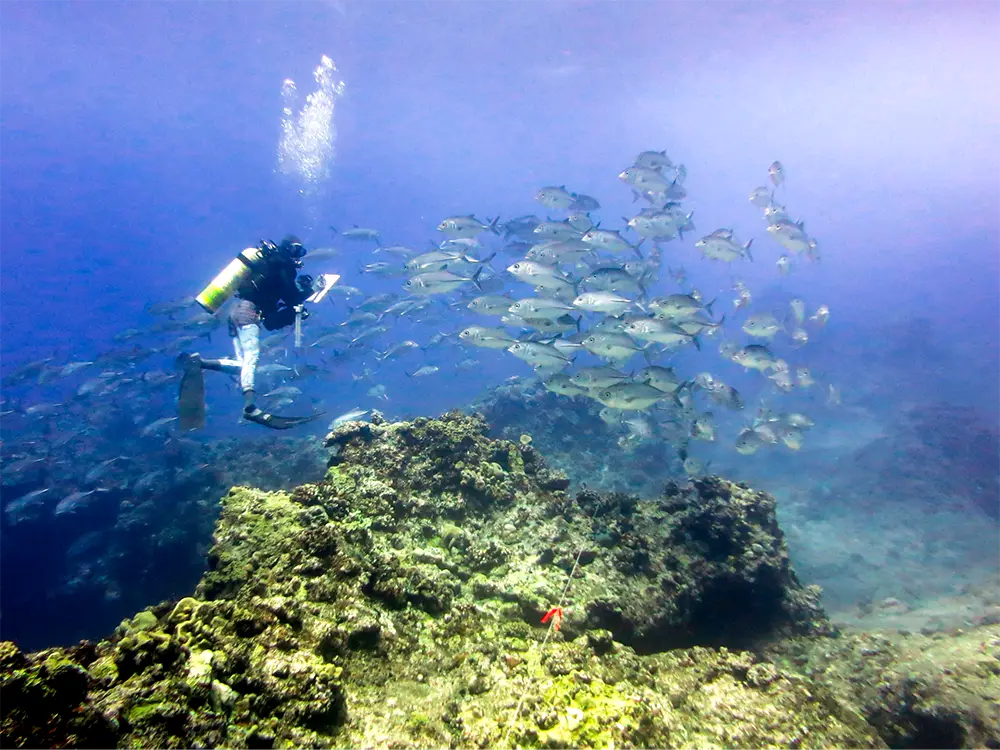
2022 RICHARD Marianas Islands Mission
- 4/11/2022 - 8/11/2022
- NOAA Ship Rainier
- Cruise Website
- View Cruise Storymap
- View Photo Gallery





